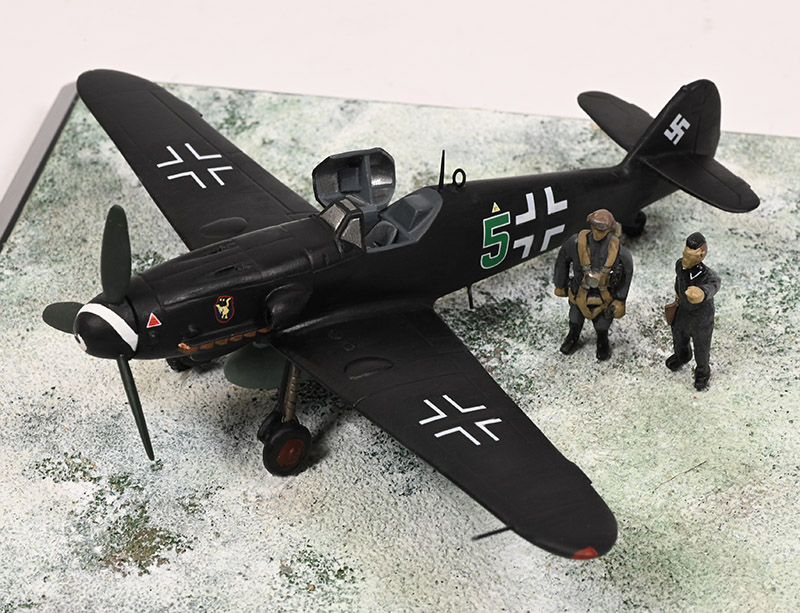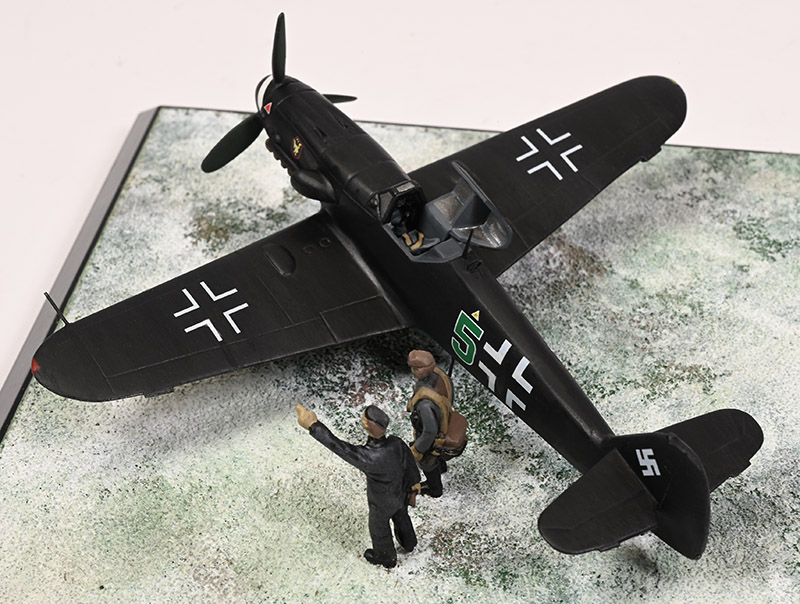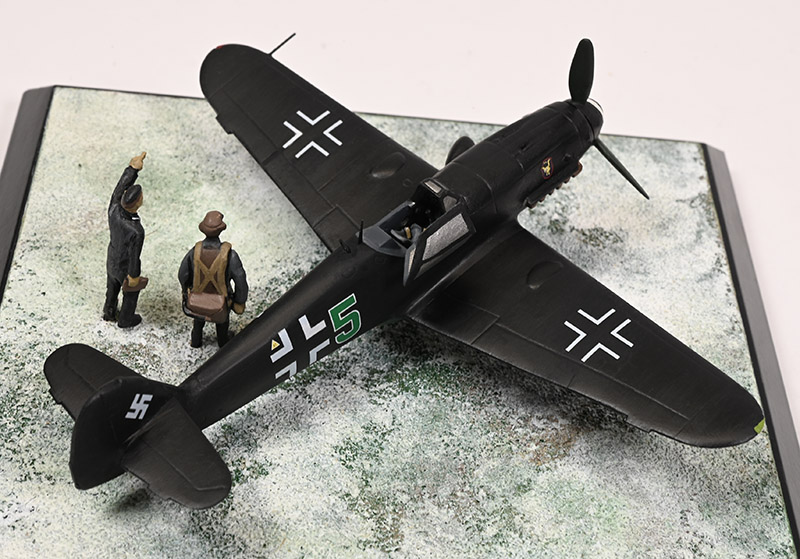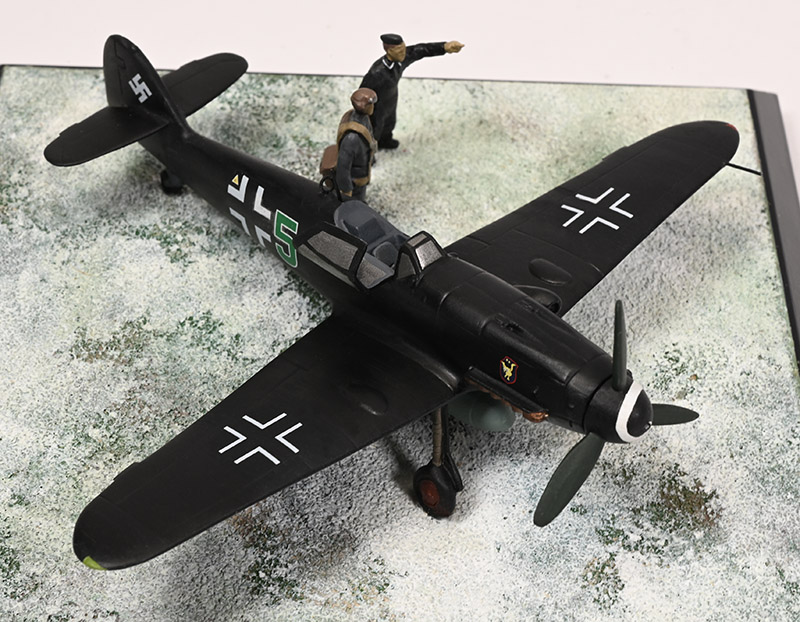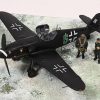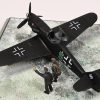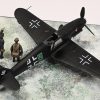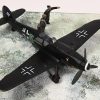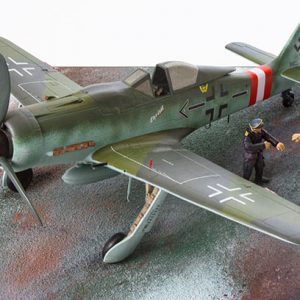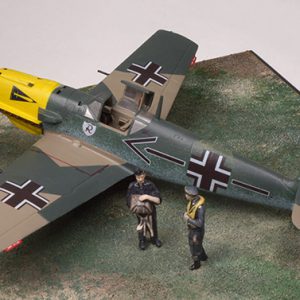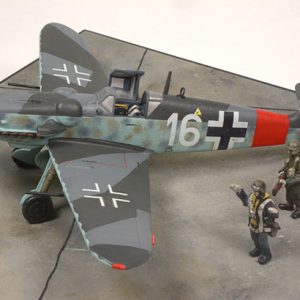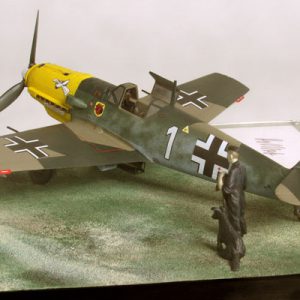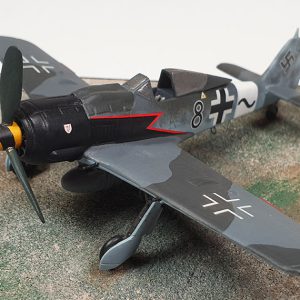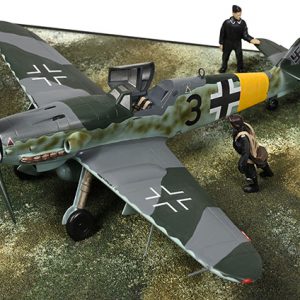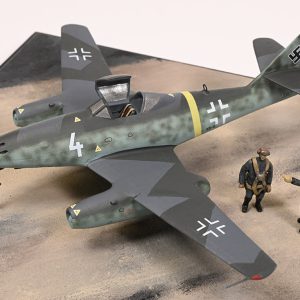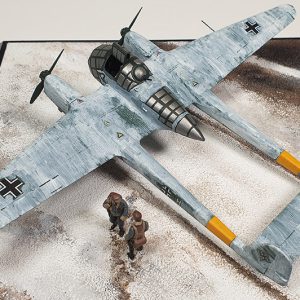Messerschmitt Bf 109 G-6/AS, Werknummer Unknown, Green 5
2./Erg. JG2, Oberleutnant Manfred Dieterle, Gardelegen, Germany, Spring 1945
This pressurised version of the Bf 109 G-6 was developed to combat the increasingly high altitude operations of the allies in the later part of the war. The airframe was powered by the DB 605AS, an altitude optimised version of the DB 605A using the larger DB 603 supercharger. Developed from the Daimler-Benz DB 601, the DB 605 was in service from 1942 to 1945 and powered the Bf 109, Bf 110 and Me 210. The DB 610, a pair of DB 605s geared to turn a single output shaft, was used in the A-3 and all A-5 variants of Germany’s only operational heavy bomber, the Heinkel He 177 A. License-built versions of the DB 605 were used in the Macchi C.205, Fiat G.55, Reggiane 2005 and some other Italian aircraft. The primary difference between the 605 and 601 was the displacement. Through careful study, Germany’s engineers were able to determine that the existing engine block could be bored out to a larger diameter without seriously affecting the strength of this component. The difference was minimal, increasing from the 601’s 150 mm to the 605’s 154 mm, but given the 12 cylinders this increased the overall displacement from 33.9 liters to 35.7 litres. Altered valve timing increased the inlet period and improved the scavenging to give greater volumetric efficiency at higher speeds, which improved the maximum allowable RPM to 2800 from the 601’s 2600. The combination of these changes improved power from 1,350 PS (1,332 hp) to 1,475 PS (1455 hp). The engine was otherwise similar, notably in size which was identical to the DB 601. However, weights did increase from 700 to 756 kg. Approximately 42,400 DB 605s of all kinds were built. Later Gustav’s, like the G-6/AS variant, had a larger vertical tail and an improved cockpit canopy for better visibility, the Erla-Haube. The canopy structure was completely redesigned to incorporate a greater area of clear perspex. The welded framing for the three-panel design was reduced to a minimum and there was no longer a fixed rear portion, with the entire structure aft of the windscreen being hinged to swing to starboard when opened. The Bf 109 G-6/AS saw a refinement of the engine cowlings. The formerly separate, Beule blisters covering the spent shell-casing chutes of the synchronised fuselage-mount MG 131s were completely integrated into the upper cowling panels, vastly improving their streamlining. Between April and August 1944, 226 G-6/AS’s were produced and a further 460 G-6 airframes were converted to the AS variant.
Ergänzungsnachtjagdstaffel 2 was established on March 9th, 1944 in Ludwigslust and its task was the operational training of the single-engine night fighter pilots who were afterwards destined for JG 300, JG 301, JG 302 and later for NJG 10 and NJG 11. At the end of July, the Staffel was enlarged to Gruppe size, and at the beginning of November 1944 its name was changed to EJG 2. In October the unit received Messerschmitt’s Bf 109G-6/AS and G-14/AS which the instructors deployed to fly the night sorties against British Mosquitoes.
Manfred Dieterle was in combat on 6th March 1944 during a raid on Berlin. Damaged by return fire, he made a successful wheels down landing at base. His 8th & 9th victories, scored the same day were both against B 17 Flying Fortresses. A 13th and final aerial victory, a B-17 near Eisenach, on 13th September 1944. Throughout 1944-45 Dieterle was reported to have flown the Bf 109G-6, Bf 109G-6/AS and Bf 109G-14/AS and so it is not possible to ascertain his aerial victories when flying the G-6/AS. Manfred Dieterle himself commented in his logbook of a sortie flown in a Bf-109G/AS: “Geht ab wie eine Rakete!” which translates to “goes like a rocket!”. High altitude performance of the AS version must have been noticeably better than of the stand Gustav powered by the DB605A. Apparently, Dieterle initially requested that his machine be stripped of all camouflage paint for an extra turn of speed for Mosquito chasing duties, and a test flight was flown in the bare metal finish. However the airframe was finally painted a semi-glossy black finish. War time photos show the extended flame damping exhaust shield for night operations. Like other combat machines in his unit, Dierterle’s aircraft was marked with numerals in green colour. In the case of Green 5, the original standard camouflage colours were over-painted with RLM 22 Scwartz (black) for better night concealment.


